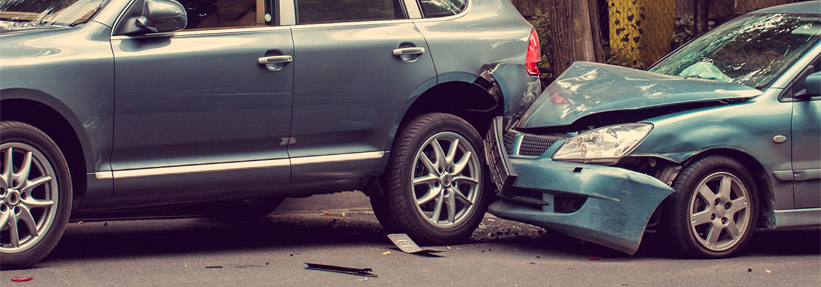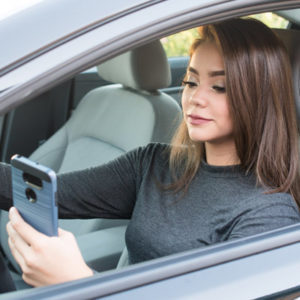How Dangerous are Car Accidents Involving Teen Drivers?
Many teenagers are excited at the sense of freedom they get when they learn to drive. Getting a driver’s license is a rite of passage for most teens, but they are often susceptible to accidents that cause injuries or deaths. Parents and extended family need to know how to prevent teen accidents, and motorists should be aware of who is near them while they are driving. An experienced Baltimore car accident lawyer should be contacted if an accident involving a teen occurs. Although teens should be given the best driver’s education possible, there is no guarantee that all accidents can be avoided.
How Often are Teens Involved in Car Accidents?

Given that teen drivers are often driving to and from school, the homes of their friends, and local stores, they do not need to go far to be involved in an accident. Although 37 percent of crashes involving teen drivers occur between the hours of 9:00 p.m. and 6:00 p.m., 52 percent of those accidents occurred on Friday, Saturday, and Sunday. These teens most often go to various events without appropriate supervision.
How Do Teens Obtain a Driver’s License in Maryland?
The Children’s Hospital of Philadelphia Research Center has found that most teen drivers receive a full driver’s license while still deficient in several areas of driving. Car accidents involving teens most often occur during left turns, when the driver runs off the road, or when a driver rear-ends another vehicle.
Given this information, it is interesting to note that teen drivers in Maryland can obtain a learner’s permit when they are 15 years and nine months old. Teens can receive a provisional license at 16 years and six months, and they receive a full driver’s license at 18 years of age.
Although a teen might begin driving early, they may not get the practice they need to drive safely, as they drive less than the rest of the population aside from senior drivers. Parents are advised to judge when they believe their child is ready to drive. Although a child’s friends might get a learner’s permit as soon as they reach 15 years and nine months, other teens may not be ready to drive.
Judging when the child is ready is just as important as teaching them to drive safely. Parents must continuously support their children, ride with them, and continue to instruct them as much as possible. This is especially important because parents are vicariously liable for the actions of their teenagers in Maryland.
Are Parents Liable for a Teen’s Actions Behind the Wheel?
Under Maryland law Section 11-604, parents are liable for restitution after their child has committed a criminal act. For example, a child who is drinking and driving is committing a crime. When they crash into someone and kill them or cause major injuries and property damage, the parents are liable.
Moreover, under Section 16-107, the driver’s license application is cosigned by the parent. This makes the parent liable for any negligent behavior on the part of their child. If the child is driving in an inappropriate manner, they could crash. Because of their negligence, their parents can be held liable via a civil action. Maryland, however, caps a parent’s liability at $10,000 for a single action.
How can Parents Help Teens Learn to Drive Safely?
Parents are often left to teach their children to drive. Even if a teen goes to a driver education course, they will spend more time driving with their parents than anyone else. Parents can use these tips to help their children learn safe driving techniques:
- Allow teens to drive short distances when the family is together. Teens might be allowed to drive to the destination or back home. Teens could be allowed to drive themselves to school, with the parent taking the car to work afterward.
- Teach teens how to pump their own gas and use the appropriate etiquette in a gas station. Although this may seem trivial, it is easy to bump into other vehicles in a crowded gas station parking lot. Additionally, teens need to know how to pump gas safely.
- If a teen is driving, they need to know how to connect their phone to the car’s hands-free system. If the car does not have such as system, parents might add a hook for the phone so that it is not in the teen’s lap.
- When teens are allowed to drive with the family, they should be given opportunities to drive at night. Driving at night is difficult for any motorist, and supervised night driving is the best way to help a teen practice. At the same time, young drivers will learn how well they respond to nighttime driving conditions.
- Parents should not be afraid to point out situations of note on the road. It is helpful to explain to teens why and how other drivers are making poor decisions. Parents can explain why certain driving maneuvers have been used during the trip and ask the teen what they would do in basic situations. In this manner, teens learn to think on their feet when their parents are actively involved in their learning experience.
How are Teens Injured or Killed in Car Accidents?
Teen drivers get into accidents in the same way everyone else does. Some of the most common car accidents occur even more frequently with teenagers because driving is an exciting and new experience. Teenagers often do not see the big picture or understand the long-term effects of their actions. Therefore, common teen driving accidents include the following scenarios:
Distracted driving. Of teens questioned in the 2019 Youth Risk Behavior Survey, 39 percent said that they texted and drove at least once in the 30 days preceding the survey. Teenagers today grew up with modern technology, and they have often had their phones since they were in elementary school. New drivers need to be taught to put down their phones or use the hands-free system in the car.
Drunk/impaired driving. Many teens go out and party whether anyone wants them to or not. Some of these teens get behind the wheel after drinking, hoping to make it home safely. It has been reported that 24 percent of teens killed in car accidents in 2017 were drinking or involved in a drunk driving crash. Additionally, 58 percent of those killed in these crashes were not wearing seat belts. Teens often suffer from a lack of forethought because of their lack of life experience, and their judgment worsens if they have been drinking.
Social host laws in Maryland dictate that parents or adults can be held liable for drunk driving accidents if they furnished the alcohol or knew it was available and did nothing to stop it. These parents or adults can be held civilly and criminally liable, and a jail sentence can be handed down to parents or adults who furnish alcohol to minors.
Drowsy driving. Drowsy driving is common among teens, as they do not realize how much focus is required to drive. A teenager cannot be expected to get into a car and notice that they are too tired to drive. Making this situation even more upsetting is that a teenager might not feel comfortable pulling over to sleep in the car before driving home. Although anyone would be vulnerable in that position, teens are much more vulnerable. A teenager might also be afraid to contact a parent or adult to drive them home.
Teens often get jobs when they have a car, or they have a job that allows them to pay for the car. 
Minimal seat belt usage. Seat belt usage among teenagers is often much lower than that of the rest of the population. Approximately 47 percent of teens killed in car accidents in 2018 were not wearing seat belts. When many teen drivers are not wearing seat belts, deaths will naturally increase. Even more troubling is that 43 percent of high school students reported in 2019 that they did not wear a seat belt when riding in someone else’s car.
A teen driver might get behind the wheel for the first time having already been conditioned to not wear a seat belt. Teenagers also tend to pile into cars, and a five-passenger sedan carrying seven people will leave two people without seat belts.
Poor weather or road conditions. Teens who are driving in poor weather conditions or on bad roads simply do not have the experience necessary to remain safe. Combining nighttime driving or chatty passengers with poor conditions makes teen drivers even more vulnerable. One bump on the road can throw the vehicle into another lane, and teen drivers often have no idea how to deal with slippery roads, ice, or snow.
Rear-end accidents. Rear-end accidents often occur in highway traffic or on congested roads because teens are not scanning the road. An adult who has driven for many years can see the traffic light changing when they are several hundred feet away. Experienced drivers know to watch crosswalk signals to see the countdown before the light changes. Experienced drivers can also see traffic stopping far ahead of them.
A teen driver who does not understand how to do this is more likely to be involved in a rear-end accident. Nighttime driving conditions make all these situations more dangerous, as 37 percent of fatal accidents involving teen drivers occur between 9:00 p.m. and 6:00 a.m. Teen drivers also invite rear-end accidents when they do not turn on their headlights at night, in the rain, or in the early morning. Teen drivers might not signal when turning or changing lanes, leading to even more accidents.
A car accident lawyer should be contacted when an accident occurs involving a teen driver in the family or an inexperienced driver on the road.
Should Teen Drivers be Allowed to Carry Teenage Passengers?
Teen drivers are not allowed to carry teenage passengers under Maryland law. If a teen driver has teenage passengers in the vehicle, they must also have an adult at least 21 years of age in the vehicle who has been a licensed driver for three years. These restrictions are stringent because teenagers are easily distracted when their friends are in the vehicle.
A teen driver may carry passengers under 18 years of age if they are an immediate family member who lives in the same household. Although Maryland allows these exceptions because teen drivers might help drop off and pick up their younger siblings, teenagers should not be allowed to drive with younger passengers too often. It can be difficult for a teen driver to focus on driving while also babysitting their younger siblings.
Is Inexperience a Factor in These Accidents?

Inexperienced drivers also suffer from an inability to scan the road and their dashboard. They may not know how fast they are going because they are focused on the road. If a teen driver is afraid of speeding, they cannot focus on the road.
Inexperienced drivers also tend to get lost because they do not know all the roads near their home. Someone who is confused or disoriented is distracted and more likely to be involved in an accident. When these teen drivers try to enter addresses or locations in a GPS app, they are even more distracted. A nervous driver who is lost will focus on the directions more than the road.
Teen drivers also tend to ignore their turn signals and drive too closely to other vehicles. Research by the Insurance Institute for Highway Safety (IIHS) has shown that forward collision warning systems in modern vehicles seemed to encourage teens to drive too closely to the car in front of them. They are relying on the car to tell them when to stop. When the front collision warning system was turned off, teen drivers tended to back off from the driver in front of them.
Researchers found, however, that teen drivers were more likely to stay in their lanes and use their turn signals if they had a side-impact warning system. Defects cause accidents every day, but teen drivers often do not realize something is wrong with their vehicle. Parents should encourage teens to let them know if they notice anything unusual occurring inside or outside the car. Because unaware teens might drive defective vehicles, they could cause even more accidents.
Fire engines, police cars, and ambulances require a wide berth when they must reach the hospital or scene of an emergency. Teen drivers often know they should get out of the way, but they might not understand how to do so safely. Parents should teach teen drivers to slow down and slide to the shoulder. Stopping suddenly could cause a multi-vehicle accident.
Pedestrians cross the street and use intersections each day, but teen drivers may not realize pedestrians are close by. Some teens might not understand how crosswalks work. Teen drivers also might not know that a pedestrian can cross while a driver is turning, and that the pedestrian has the right of way.
Fear may also play a part in teen car accidents. If a teen says they are not ready to drive, they should not be forced to get their license. Some teens may never get their driver’s license because they are simply too afraid to drive, and their wishes should be respected, as a terrified driver is likely to cause accidents.
Are There Vehicles Teens Should Not Drive?
Teens are excited to drive any vehicle that is available for them to drive. Although new vehicles have gotten safer over the years, teen drivers may want to avoid certain types of vehicles that are easy to crash or roll over. An SUV typically has a high center of gravity, and it can easily roll over if the driver runs off the road or speeds over a change in gradient. SUVs are large, but they are so easy to roll over that an inexperienced driver should be trusted with a vehicle that is much lower to the ground.
Parents can check safety ratings for a wide range of vehicles, including compact cars, coupes, sedans, and small SUVs. A parent who reads through the IIHS’ list of safe used cars will notice that no large SUVs are listed.
Which Vehicles are Safer for Teens to Drive?
Teen drivers are often safest in an older car with low power that sits low to the ground. If possible, parents can hold onto old coupes or sedans that their children can drive when they are of age. An older car is often much safer because it is heavier and more difficult to damage.
Parents might also choose vehicles that are renowned for their safety characteristics. Companies such as Volvo, Subaru, and Hyundai have received excellent safety ratings in the past. Volvo is also credited with inventing the three-point seat belt. Aside from the manufacturer of the vehicle, some cars are better equipped to protect passengers. Sedans and coupes with long hoods or trunks provide more crumple space in the event of a crash. A vehicle with side-impact airbags is safer than one without them.
Given research from the IIHS, teen drivers would do well to have a vehicle with a side-impact warning system. Modern warning systems, however, should be matched with safe vehicles. Buying a teen driver a large SUV just because it has safety warning systems is not necessarily prudent.
Why Hire a Lawyer?
When a teen driver injures someone, the victim and their family need to know who is liable for damages caused during the accident. Because there are several people who could be liable for these accidents, a lawyer must initiate an investigation. A lawyer also understands how to help parents in the aftermath of an accident their child has caused.
The lawyer should be given all the information the family has gathered. Although teenagers are often involved in accidents because of their inexperience or recklessness, they are also easy scapegoats for negligent adults. When parents believe that their teen is not liable for an accident, they need legal representation to protect them and their child.
A lawyer will access the police report, review the circumstances of the accident, and challenge any findings that appear to be incorrect. When the parents are liable because they have allowed negligent behavior, the victim must know how the state of Maryland will allow a lawsuit to proceed.
Parents should speak to a car accident lawyer as soon as an accident occurs. The teen driver should not be allowed to speak with anyone involved in the case, and the lawyer should be allowed to negotiate a favorable outcome for everyone involved.
Baltimore Car Accident Lawyers at LeViness, Tolzman & Hamilton Assist Victims of Accidents Involving Teen Drivers
When your teen has been involved in an accident or you were hurt by an inexperienced driver, reach out to the Baltimore car accident lawyers at LeViness, Tolzman & Hamilton for assistance. Our experienced legal team will review your case and secure the maximum financial compensation you deserve. We will not stop fighting for you until we have your complete satisfaction. Call us today at 800-547-4LAW (4529) or contact us online for a free consultation.
Our offices are conveniently located in Baltimore, Columbia, Glen Burnie, and Prince George’s County, where we represent victims throughout Maryland, including those in Anne Arundel County, Carroll County, Harford County, Howard County, Montgomery County, Prince George’s County, Queen Anne’s County, Maryland’s Western Counties, Southern Maryland and the Eastern Shore, as well as the communities of Catonsville, Essex, Halethorpe, Middle River, Rosedale, Gwynn Oak, Brooklandville, Dundalk, Pikesville, Parkville, Nottingham, Windsor Mill, Lutherville, Timonium, Sparrows Point, Ridgewood, and Elkridge.



